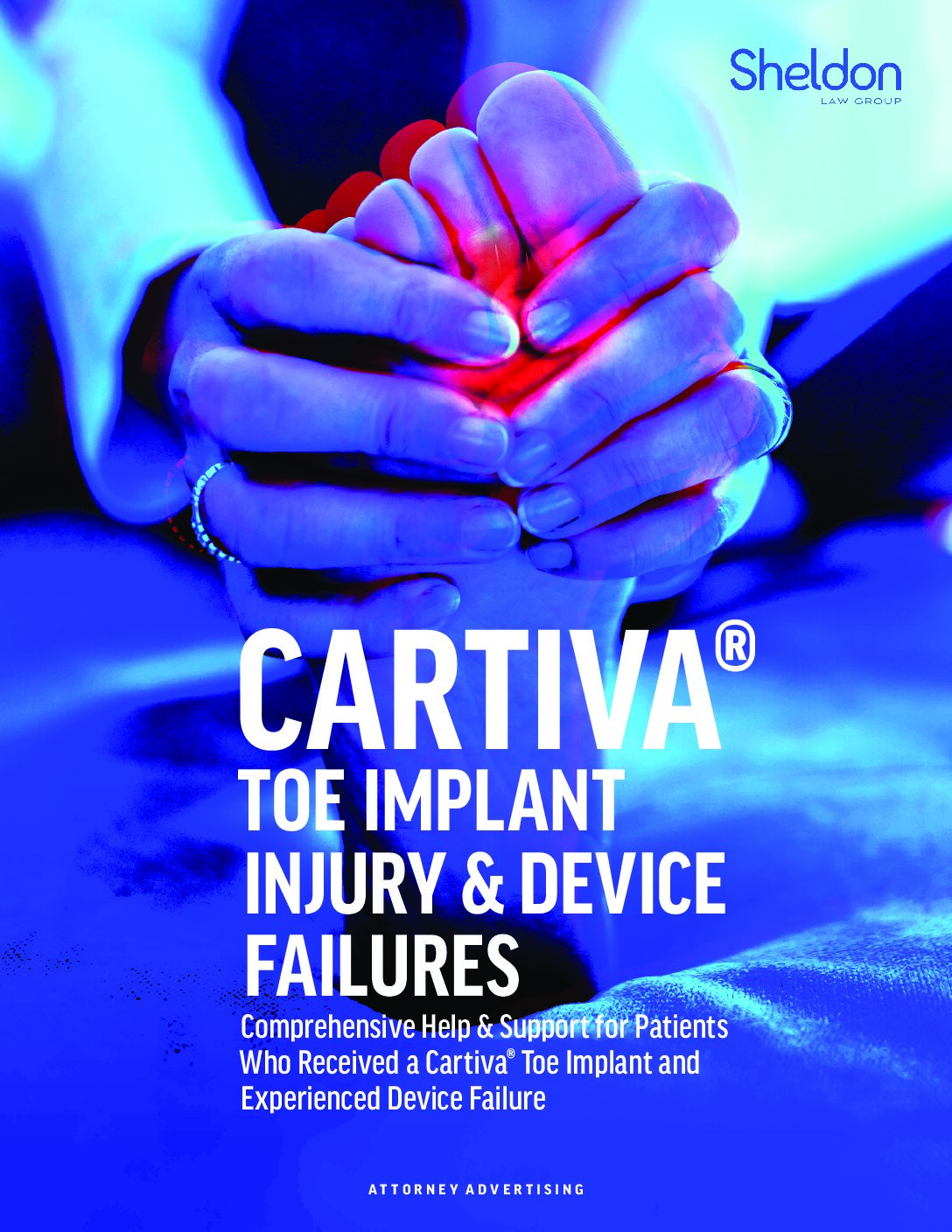Diagnosis of Cartiva Implant Injuries:
Symptoms and Tests
Cartiva implant is a synthetic cartilage device that is used to treat arthritis of the big toe joint. It is intended to reduce pain and improve joint function.
Get A 100% Free CASE EvaluationCartiva Toe Implant Complications and Adverse Events
However, some patients may experience complications and adverse events after the implant surgery. These may include:
- Infection: Signs of infection may include redness, swelling, warmth, pus, fever, or chills. Infection can occur at the site of the implant or in the bloodstream. Infection can lead to implant failure, osteomyelitis (bone infection), or septic arthritis (joint infection).
- Loosening: The implant may become loose over time due to wear and tear, trauma, or poor bone quality. Loosening can cause pain, instability, reduced range of motion, or implant migration (movement of the implant from its original position).
- Fracture: The implant or the surrounding bone may fracture due to excessive stress, trauma, or osteoporosis. Fracture can cause pain, deformity, instability, or implant failure.
- Allergic reaction: Some patients may have an allergic reaction to the implant material or the surgical instruments. Allergic reactions can cause rash, itching, swelling, or difficulty breathing.
- Synovitis: Synovitis is inflammation of the synovial membrane that lines the joint. Synovitis can cause pain, stiffness, swelling, or fluid accumulation in the joint.
- Osteolysis: Osteolysis is loss of bone tissue around the implant due to inflammation or infection. Osteolysis can cause pain, instability, or implant loosening.
Diagnosing Cartiva Toe Implant Complications
To diagnose Cartiva implant complications and adverse events, the doctor may perform a physical examination and ask about the patient’s symptoms and medical history.
The doctor may also order some tests, such as:
- X-rays: X-rays can show the position and alignment of the implant and the bone. They can also detect fracture, loosening, migration, or osteolysis.
- Blood tests: Blood tests can check for signs of infection or inflammation, such as elevated white blood cell count, erythrocyte sedimentation rate (ESR), or C-reactive protein (CRP).
- Joint aspiration: Joint aspiration is a procedure that involves inserting a needle into the joint and withdrawing fluid for analysis. Joint fluid can be tested for bacteria, crystals, or inflammatory cells that may indicate infection or synovitis.
- MRI: MRI can provide detailed images of the soft tissues around the implant, such as tendons, ligaments, muscles, and nerves. MRI can also detect infection, synovitis, or osteolysis.
If You Had to Have Additional Surgery After Receiving a Cartiva Toe Implant, We Can Help.
If you have suffered from complications after receiving a Cartiva Toe Implant, contact us now. We are fighting to protect the rights of patients allegedly injured by Cartiva toe implants and hold the device makers fully accountable for putting profits above the health and well-being of patients.
Patients who received a Cartiva toe implant and were forced to have revision surgery to remove or replace the device, may be entitled to significant financial compensation. Contact us now to learn more about your rights and whether you are entitled to compensation.

